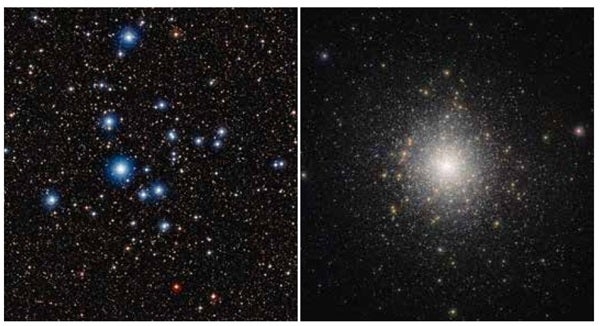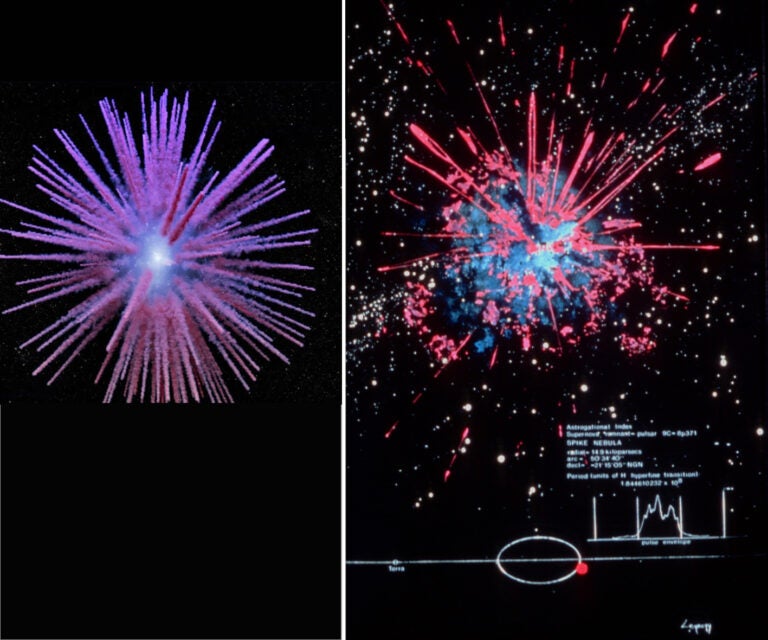The open star cluster NGC 2547 (left) contains young, bright stars roughly 30 million years old that are loosely gravitationally bound and will spread apart over time. By contrast, the globular cluster 47 Tucanae (NGC 104) contains millions of stars about 13 billion years old that have been bound in the spherical cluster their entire lives.
Globular clusters are old clusters of stars that have remained in a gravitationally bound system. These clusters are usually roughly spherical and can contain anywhere from a few thousand to a million stars.
Globular clusters are found in our galaxy’s spherical halo, so they are distributed above, below, and level with the plane of our flat, disk-shaped Milky Way. They are typically on the order of 13 billion years old, meaning they contain some of the oldest stars in our galaxy. As such, astronomers use them to study our galaxy’s early history to learn more about what the Milky Way was like when these stars formed.
Open clusters are much younger and smaller than globular clusters. They are the recent birthplaces of new stars, which form out of clouds of dust and gas, and contain only hundreds or thousands of stars. Though the stars in an open cluster formed together out of the same material, they do not remain gravitationally bound over time and spread out, scattering their stars far and wide. Because they are not gravitationally bound, these clusters can have random and irregular shapes. They are located in the plane of our galaxy, along the spiral arms where the gas and dust in the Milky Way resides. Because open clusters are both younger and shorter lived, astronomers use them to study young stars and the processes of star formation, as well as the dynamics of how material spreads out in our galaxy.










